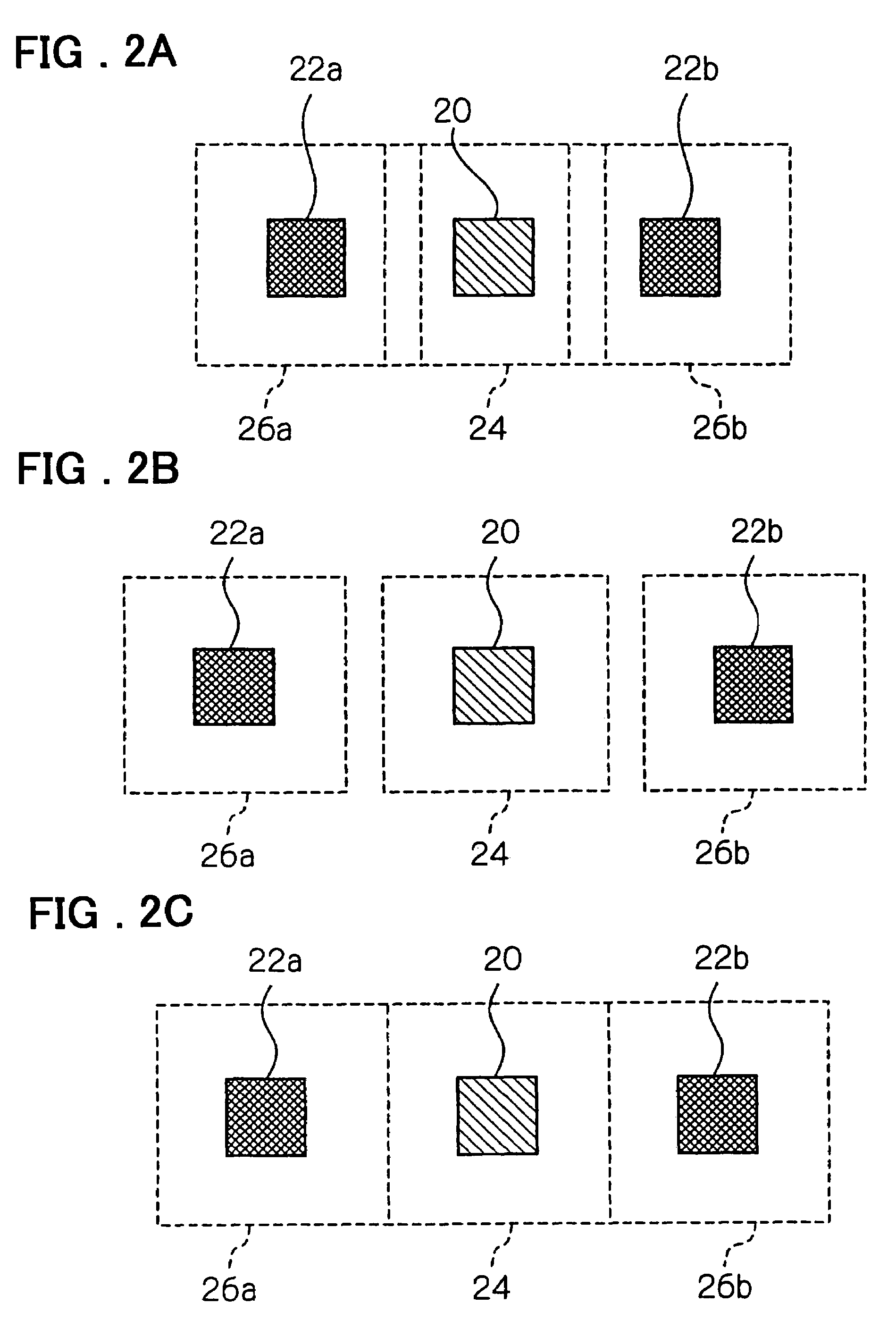Hole pattern design method and photomask
a pattern design and pattern technology, applied in the field of hole pattern design methods and photomasks, can solve the problems of affecting affecting the design of the hole pattern, so as to reduce the design man-hours, improve the overall optical condition of the pattern drawing, and improve the overall optical condition. effect of the overall optical condition
- Summary
- Abstract
- Description
- Claims
- Application Information
AI Technical Summary
Benefits of technology
Problems solved by technology
Method used
Image
Examples
embodiment 1
[0038]A method of designing hole patterns according to the present invention will be described below. In the present embodiment, a minimum pitch allowed by a design rule for designing patterns of a photomask used during an exposure process in semiconductor integrated circuit manufacturing is the densest pitch of hole patterns.
[0039]FIG. 1 shows pattern drawings showing a method of designing hole patterns on a photomask.
[0040]In FIG. 1A, the lateral direction is called X direction and the vertical direction Y direction. As shown in FIG. 1A, a grid with uniformly spaced multiple lines in X and Y directions (coordinates) is provided on the pattern drawing. The space of grid is smaller than the densest pitch of hole patterns 10. In the present embodiment, the space of the grid is half of the densest pitch of the hole pattern 10. Hereinafter, the space of grid is called “grid size”, and size of “grid size” multiplied by n (n is an integer) is indicated as “n grid sizes”. Furthermore, thi...
embodiment 2
[0048]In the present embodiment, the degree of isolating property (discreteness) from other surrounding patterns is calculated for each pattern, and an optimal pattern arrangement is realized utilizing the degree of isolating property. In the present embodiment, as a value indicating the degree of isolating property, “discreteness rate” as defined below is used.
[0049]On a pattern drawing for a photomask, a resize process, where each pattern is enlarged by a prescribed multiplier centering the gravity center, is carried out, and similar patterns, which are patterns resulted from the resize process on each pattern, are virtually created. Hereinafter, an object pattern whose discreteness rate is being calculated is called “reference pattern”, and patterns surrounding the reference pattern are called “peripheral patterns”. Furthermore, a similar pattern of the reference pattern is called “reference similar pattern”, and a similar pattern of peripheral pattern is called “peripheral simil...
embodiment 3
[0071]In the present embodiment, a optimum value of hole density, which is the area density of hole patterns within a prescribed area, is calculated and applied to a hole pattern design method.
[0072]The hole density according to the present invention is explained below.
[0073]FIG. 6 shows pattern drawings for explaining hole density. FIG. 6A shows an example where a maximum number of hole patterns are provided within a unit graphic. FIG. 6B shows a figure showing a pattern arrangement example for calculating hole density.
[0074]As shown in FIG. 6A, the unit graphic 30 is a square with a side three times as long as the densest pitch of hole patterns 10, therefore, the maximum number of the hole patterns 10 that can be provided within the unit graphic 30 is 9. In the present embodiment, in order to secure a focus margin (>0.2 μm), the number of the hole patterns 10 provided within the unit graphic 30 must be not less than 5.4 according to the graph, i.e. 6 or more in terms of the number...
PUM
| Property | Measurement | Unit |
|---|---|---|
| processing size | aaaaa | aaaaa |
| processing size | aaaaa | aaaaa |
| transmittance | aaaaa | aaaaa |
Abstract
Description
Claims
Application Information
 Login to View More
Login to View More - R&D
- Intellectual Property
- Life Sciences
- Materials
- Tech Scout
- Unparalleled Data Quality
- Higher Quality Content
- 60% Fewer Hallucinations
Browse by: Latest US Patents, China's latest patents, Technical Efficacy Thesaurus, Application Domain, Technology Topic, Popular Technical Reports.
© 2025 PatSnap. All rights reserved.Legal|Privacy policy|Modern Slavery Act Transparency Statement|Sitemap|About US| Contact US: help@patsnap.com



